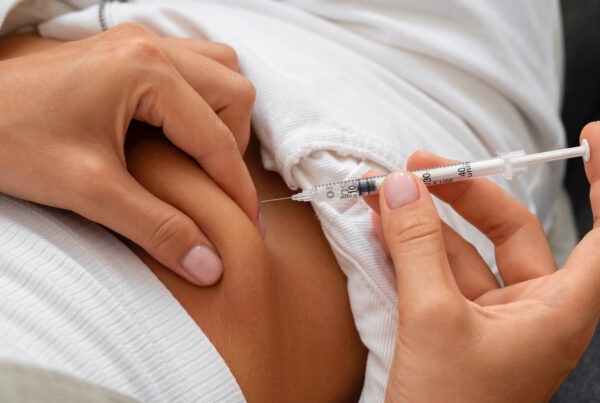In the landmark study A Double-Blind, Randomized, Placebo-Controlled, Dose-Frequency Study of Intravenous Ketamine in Patients With Treatment-Resistant Depression by Singh et al. (2016), researchers explored how frequently ketamine should be administered to sustain its powerful antidepressant effects in patients with treatment-resistant depression (TRD). This pivotal research sought to answer a crucial question: Does dosing frequency matter when delivering intravenous ketamine?
Treatment-resistant depression poses a serious clinical challenge. Many patients fail to respond to multiple lines of pharmacological therapy, leaving them vulnerable to chronic symptoms and a reduced quality of life. Ketamine, a fast-acting NMDA receptor antagonist, has garnered attention for its rapid antidepressant effects. This study adds valuable insight into how best to deliver ketamine for sustained relief.
Study Design and Patient Demographics
The double-blind, placebo-controlled study was conducted across multiple centers and enrolled 68 adult patients (ages 18–64) diagnosed with TRD. Of these, 67 individuals (45 women) completed treatment. Participants were randomly assigned to one of four groups:
- Ketamine (0.5 mg/kg) twice weekly
- Ketamine three times weekly
- Placebo twice weekly
- Placebo three times weekly
Ketamine or placebo was administered intravenously over 40 minutes for a maximum duration of 4 weeks.
The primary outcome was measured using the Montgomery-Åsberg Depression Rating Scale (MADRS), a standard tool for assessing depression severity.
Results: Frequency Matters, But Not Excessively
The study’s findings were both revealing and clinically relevant:
- In the twice-weekly ketamine group, the average MADRS score dropped 18.4 points (SD=12.0) by day 15.
- In the thrice-weekly ketamine group, the decrease was 17.7 points (SD=7.3).
- In contrast, placebo groups showed far less improvement:
- Twice-weekly placebo group: −5.7 points (SD=10.2)
- Thrice-weekly placebo group: −3.1 points (SD=5.7)
These results demonstrated that both ketamine dosing schedules were significantly more effective than placebo, but the difference between twice- and thrice-weekly dosing was negligible.
During the open-label continuation phase, results remained consistent:
- Twice-weekly: MADRS change of −12.2 points (SD=12.8)
- Thrice-weekly: MADRS change of −14.0 points (SD=12.5)
Safety and Tolerability
Both ketamine regimens were well tolerated, with side effects consistent with previous studies. The incidence of adverse effects such as dissociation or blood pressure elevation was manageable, and no serious adverse events were reported during the study period.
This finding reinforces the safety profile of repeated ketamine infusions, when administered under careful clinical supervision.
Clinical Implications
This study offers several important clinical takeaways:
- Twice-weekly ketamine infusions are sufficient to sustain the antidepressant effect for at least two weeks.
- Increasing frequency to three times per week did not result in significantly greater benefit, suggesting that less frequent dosing may optimize both efficacy and tolerability.
- Ketamine continues to demonstrate value as a fast-acting, short-term intervention for TRD.
Limitations and Future Research
While the findings are promising, some limitations should be noted:
- Short treatment duration (15 days) limits understanding of long-term efficacy.
- No long-term follow-up to assess relapse rates or durability of response.
- Sample size, though adequate for initial findings, limits subgroup analysis (e.g., gender differences or age-based response).
Future research should examine extended treatment timelines, optimal maintenance strategies, and comparisons with alternative agents.
Conclusion
The study A Double-Blind, Randomized, Placebo-Controlled, Dose-Frequency Study of Intravenous Ketamine in Patients With Treatment-Resistant Depression underscores the efficacy and safety of subanesthetic ketamine dosed either twice or thrice weekly. Crucially, it demonstrates that twice-weekly administration is likely sufficient, offering a practical and patient-friendly approach for sustaining rapid antidepressant effects in individuals with TRD.
References
- Singh JB, Fedgchin M, Daly EJ, et al. A Double-Blind, Randomized, Placebo-Controlled, Dose-Frequency Study of Intravenous Ketamine in Patients With Treatment-Resistant Depression. Am J Psychiatry. 2016;173(8):816-826. https://doi.org/10.1176/appi.ajp.2016.16010037
- Murrough JW, Iosifescu DV, Chang LC, et al. Antidepressant efficacy of ketamine in treatment-resistant major depression: a two-site randomized controlled trial. Am J Psychiatry. 2013;170(10):1134–1142.
- Zarate CA Jr, Singh JB, Carlson PJ, et al. A randomized trial of an N-methyl-D-aspartate antagonist in treatment-resistant major depression. Arch Gen Psychiatry. 2006;63(8):856–864.
- Daly EJ, Singh JB, Fedgchin M, et al. Efficacy and safety of intranasal esketamine in treatment-resistant depression. JAMA Psychiatry. 2018;75(2):139–148.
- Krystal JH, Abdallah CG, Sanacora G. Ketamine: A paradigm shift for depression research and treatment. Neuron. 2019;101(5):774–778.




